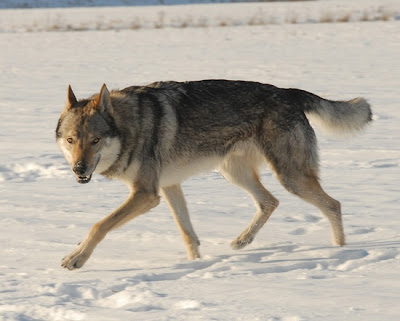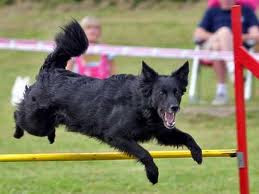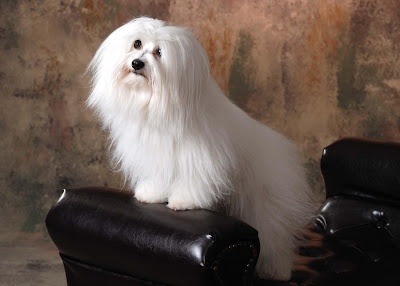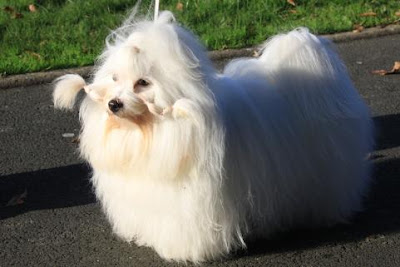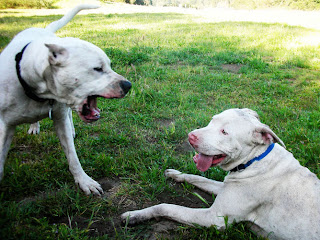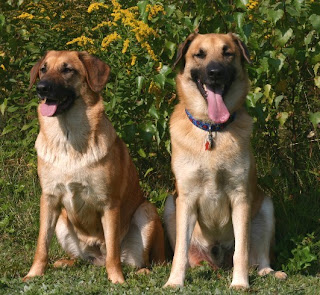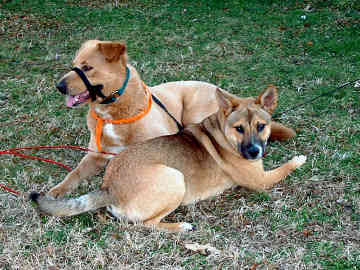History Czechoslovakian Wolfdog. A wolfdog is a dog with recent wolf heritage. That is, a wolfdog has a pure wolf ancestor within the last five generations. (That would be the wolfdogs great-great-great grandparent). Though many people still use the term "wolf hybrid," this is not an accurate term. A Czechoslovakian Wolfdog 'hybrid' is the offspring of two different species. According to the reclassification of the dog by taxonomists in 1993, the domestic dog is actually viewed as a domestic variant of the gray wolf.
Most people, when they ask this question, want to know the percentage of wolf in the wolfdog –
90%? 50%? 25%? Unless you know the animal‟s heritage for many generations back, there is no
way to tell for sure. People who work with wolfdogs are more concerned with wolf content. This
is usually determined by phenotyping, making an educated guess based on various physical and
behavioral traits. Most of the wolfdogs we see are mixed with German Shepherd Dog, Alaskan Malamute and/or Siberian Husky. People want wolfdogs that look “wolfy,” and these breeds most resemble their wild cousins.
People actually breed them. There are some ethical, responsible breeders out there. They keep accurate and honest records, are particular about what they breed into their lines, evaluate and educate potential buyers carefully, and take back the animals they sell if they do not work out, for whatever reason. Unfortunately, such breeders are rare. Most of them do not care what type of temperament or health problems may be in their lines, often misrepresent the heritage of the animals, will sell to anyone who shows up with the purchase price and, once the sale is done, that‟s that. If the buyer has a problem or can‟t keep the animal, too bad. And that‟s when the wolfdog ends up in rescue.
Wolfdogs are not wild animals. They are domestic animals with special needs. They were created by humans, and they depend on humans for food and protection, and often for companionship. A person who dumps his wolfdog in the woods, believing it can take care of itself, is sentencing that animal to fear, confusion, loneliness, and a death by starvation, disease, attacks by other animals, or a bullet.
The Czechoslovakian Wolfdog is a relatively new breed of dog that traces its original lineage to an experiment conducted in 1955 in Czechoslovakia. After initially breeding 48 working line German Shepherds with 4 Carpathian wolves, a plan was worked out to create a breed that would have the temperament, pack mentality, and trainability of the German Shepherd and the strength, physical build, and stamina of the Carpathian wolf. The breed was engineered to assist with border patrol in Czechoslovakia but were later also used in search and rescue, schutzhund, tracking, herding, agility, obedience, and drafting. It was officially recognized as a national breed in Czechoslovakia in 1982.
The color of the hair is from yellow-grey to silver-grey, with a light mask. The hair is straight, close and very thick. The Czechoslovakian Wolfdog is a typical tenacious canterer; its movement is light and harmonious, its steps are long. It is quick, lively, very active, fearless and courageous. Distinct from the character of Saarlooswolfdog, shyness is a disqualifying fault in the Czechoslovakian Wolfdog.
The Czechoslovakian Wolfdog develops a very strong social relationship not only with their owner, but with the whole family. It can easily learn to live with other domestic animals which belong to the family; however, difficulties can occur in encounters with strange animals. It is vital to subdue the Czechoslovakian Wolfdogs passion for hunting when they are puppies to avoid aggressive behavior towards smaller animals as an adult. The puppy should never be isolated in the kennel; it must be socialized and get used to different surroundings. Female Czechoslovakian Wolfdogs tend to be more easily controllable, but both genders often experience a stormy adolescence.
Most people, when they ask this question, want to know the percentage of wolf in the wolfdog –
90%? 50%? 25%? Unless you know the animal‟s heritage for many generations back, there is no
way to tell for sure. People who work with wolfdogs are more concerned with wolf content. This
is usually determined by phenotyping, making an educated guess based on various physical and
behavioral traits. Most of the wolfdogs we see are mixed with German Shepherd Dog, Alaskan Malamute and/or Siberian Husky. People want wolfdogs that look “wolfy,” and these breeds most resemble their wild cousins.
People actually breed them. There are some ethical, responsible breeders out there. They keep accurate and honest records, are particular about what they breed into their lines, evaluate and educate potential buyers carefully, and take back the animals they sell if they do not work out, for whatever reason. Unfortunately, such breeders are rare. Most of them do not care what type of temperament or health problems may be in their lines, often misrepresent the heritage of the animals, will sell to anyone who shows up with the purchase price and, once the sale is done, that‟s that. If the buyer has a problem or can‟t keep the animal, too bad. And that‟s when the wolfdog ends up in rescue.
Wolfdogs are not wild animals. They are domestic animals with special needs. They were created by humans, and they depend on humans for food and protection, and often for companionship. A person who dumps his wolfdog in the woods, believing it can take care of itself, is sentencing that animal to fear, confusion, loneliness, and a death by starvation, disease, attacks by other animals, or a bullet.
The Czechoslovakian Wolfdog is a relatively new breed of dog that traces its original lineage to an experiment conducted in 1955 in Czechoslovakia. After initially breeding 48 working line German Shepherds with 4 Carpathian wolves, a plan was worked out to create a breed that would have the temperament, pack mentality, and trainability of the German Shepherd and the strength, physical build, and stamina of the Carpathian wolf. The breed was engineered to assist with border patrol in Czechoslovakia but were later also used in search and rescue, schutzhund, tracking, herding, agility, obedience, and drafting. It was officially recognized as a national breed in Czechoslovakia in 1982.
The color of the hair is from yellow-grey to silver-grey, with a light mask. The hair is straight, close and very thick. The Czechoslovakian Wolfdog is a typical tenacious canterer; its movement is light and harmonious, its steps are long. It is quick, lively, very active, fearless and courageous. Distinct from the character of Saarlooswolfdog, shyness is a disqualifying fault in the Czechoslovakian Wolfdog.
The Czechoslovakian Wolfdog develops a very strong social relationship not only with their owner, but with the whole family. It can easily learn to live with other domestic animals which belong to the family; however, difficulties can occur in encounters with strange animals. It is vital to subdue the Czechoslovakian Wolfdogs passion for hunting when they are puppies to avoid aggressive behavior towards smaller animals as an adult. The puppy should never be isolated in the kennel; it must be socialized and get used to different surroundings. Female Czechoslovakian Wolfdogs tend to be more easily controllable, but both genders often experience a stormy adolescence.












